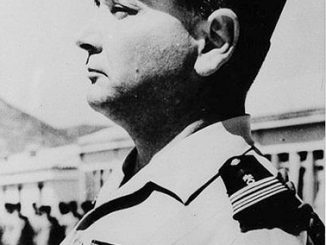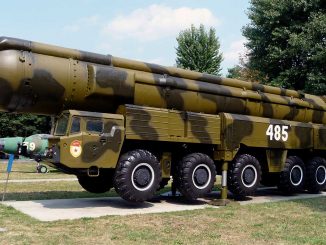Senior military leaders discussed potential challenges their commands may face in supporting future operations during a meeting of defense industry partners in St. Louis, Missouri.
Senior military leaders discussed potential challenges their commands may face in supporting future operations during a meeting of defense industry partners in St. Louis, Missouri, yesterday.
Air Force Gen. Carlton D. Everhart II, commander of Air Mobility Command; Army Maj. Gen. Kurt J. Ryan, commander of Military Surface Deployment and Distribution Command; Navy Rear Adm. Dee L. Mewbourne, commander of Military Sealift Command; and Air Force Lt. Gen. Andrew E. Busch, director of the Defense Logistics Agency participated in a panel discussion at the National Defense Transportation Association meeting.
USS Spruance, USS Decatur and USNS Carl Brashear steam in formation
Industry Innovation Critical To Military
“[We] can’t do our jobs without industry partners,” Everhart pointed out. “We rely on them for innovation, and to help open up new realms of possibility.”
As he looks to modernizing his command to continue meeting the nation’s defense needs, Everhart said he cannot tweak his budget anymore, noting “the continuing resolutions affect all of us.”
The general said his other challenges include a national pilot shortage, and today’s changing, complex global threat environment.
Volatile Security Environment
The Military Surface Deployment and Distribution Command’s military members and industry partners execute “our daily sustainment mission exceptionally well,” Ryan said. Yet, the general said he sees potential challenges in future deployment missions.
“I fundamentally believe our skills have atrophied in a number of areas, particularly in our ability and our mindset to deploy rapidly … to project national power to surge combat formations globally,” Ryan said.
He said the last massive U.S. military deployment was to Iraq in 2003.
“As I look at my workforce, only 16 percent has a frame of reference to the scale and scope of that deployment,” Ryan said.
The world’s security environment remains “very volatile, and demands a state of readiness that affords us the ability to project power globally in support of the combatant commands simultaneously,” he said.
“Those threats can emerge very quickly … in Europe, across the Asia-Pacific, the Middle East and the African continent [where] threats can change the very security nature of our environment in those regions,” Ryan said.
For those reasons, Ryan said, the services are reinvigorating emergency deployment exercise programs to further test the military’s “fight tonight” ability.
“What this means for the joint force is we will start practicing at the speed of war, so we truly are ready to fight tonight when the nation calls,” he said, adding he encourages “all of us to think about what that means for our organizations, to the enterprise, and to our current processes.”
Weapons Fielding
Busch said he wants DLA to discuss challenges up to 30 years in advance with industry partners for:
— Cyber resilience against the trans-regional threats the United States faces today;
— Future basing, which needs help from industry to develop concepts; and
— The direction in which product-support strategies for new weapon systems is going.
“Gone are days when a new weapon system is fielded,” Busch said. “We need to consider what’s happening today in the product-support strategies across the department.”
The DLA director said he sees “immense pressure” on those who must deliver their programs based cost schedules and performance.
Without fielding a weapon system in a joint task environment, he said, “Will it be good enough to have a customized, optimized solution for that weapon system, when we’re trying to converge many different weapons systems, including many new weapons systems, on a JTF commander?”
Staying Ready, Relevant, Resolute
Challenges at Military Sealift Command involve retaining relevancy, continuing to change as needed, and adapting to the world today and into future, Mewbourne said.
“Ready, relevant and resolute is what I use to define [our] endstate,” he said of his command’s strategy.
The command rests on four pillars, the admiral said, which comprise its people and continuing to “harness brilliance” at MSC; its ship platforms and maintaining them, its processes and staying cyber safe into the future, and its partners in government, industry, labor and academia.
Military Sealift Command relies on its partners because it cannot meet its challenges alone, Mewbourne said.
“We must use innovation so we do not become stale,” the admiral said. “Through continuous improvement, we can make ourselves better.”
(Follow Terri Moon Cronk on Twitter: @MoonCronkDoD)
Related Biographies
Air Force Gen. Carlton D. Everhart II
Army Maj. Gen. Kurt J. Ryan
Navy Rear Adm. Dee L. Mewbourne
Air Force Lt. Gen. Andrew E. Busch










